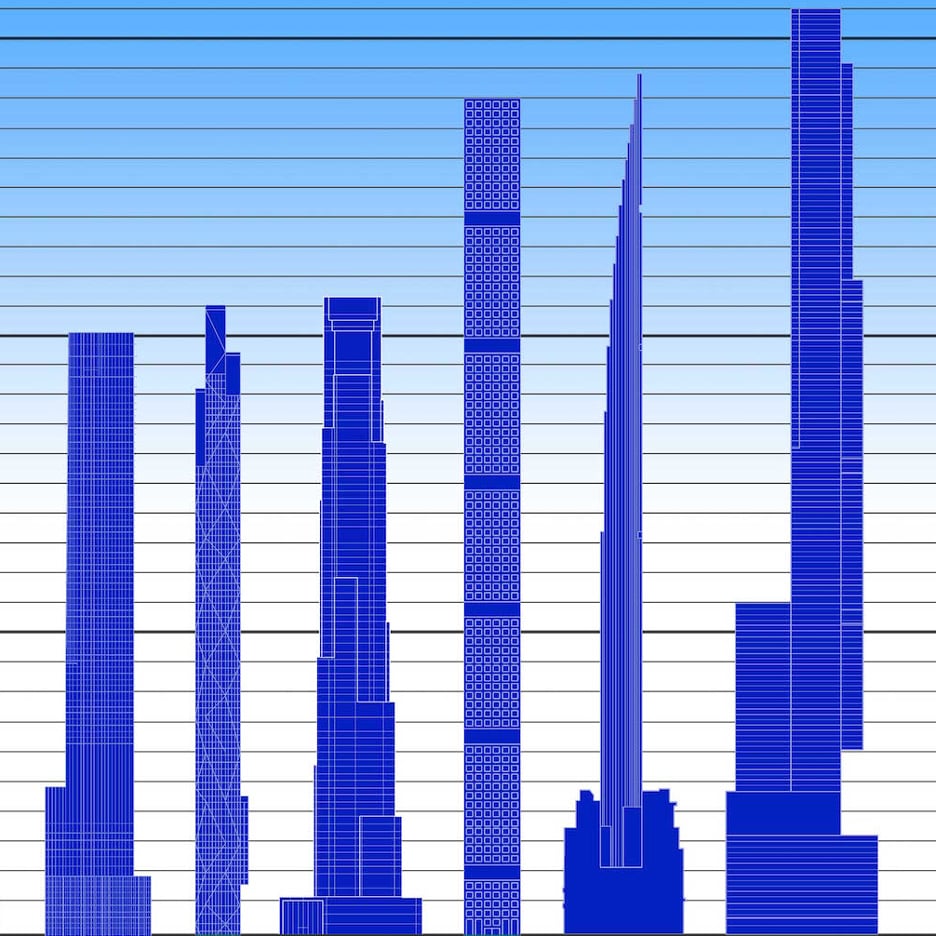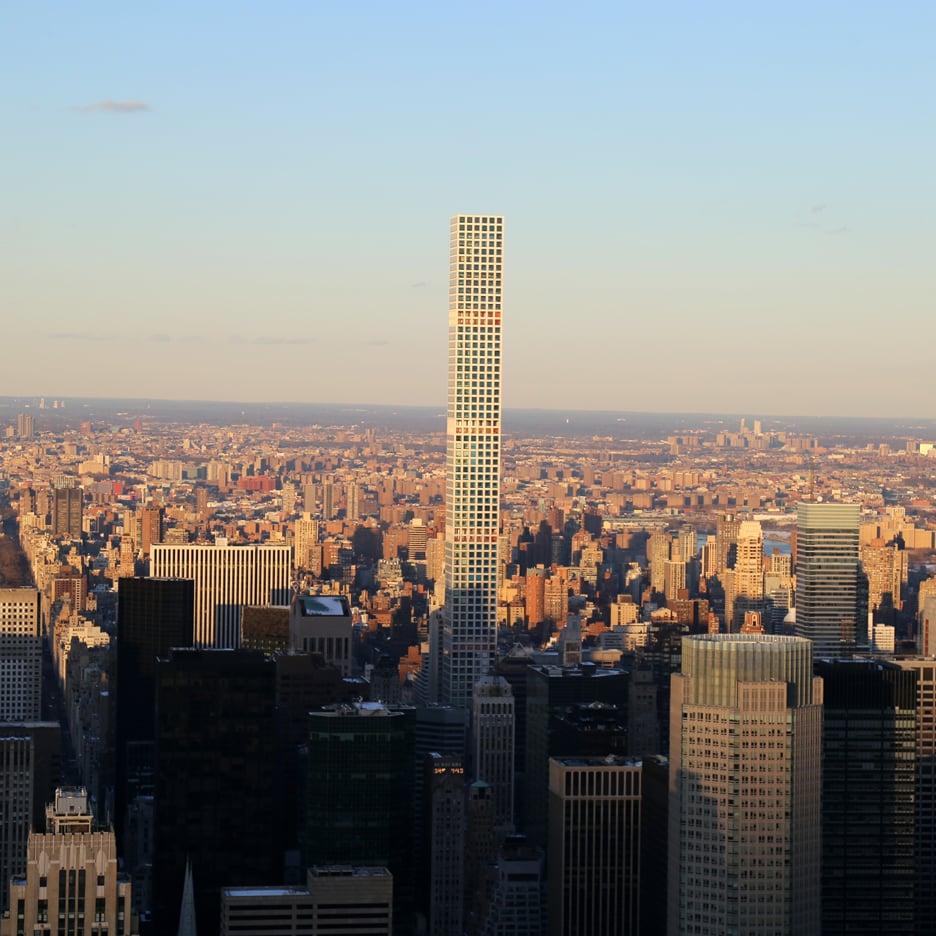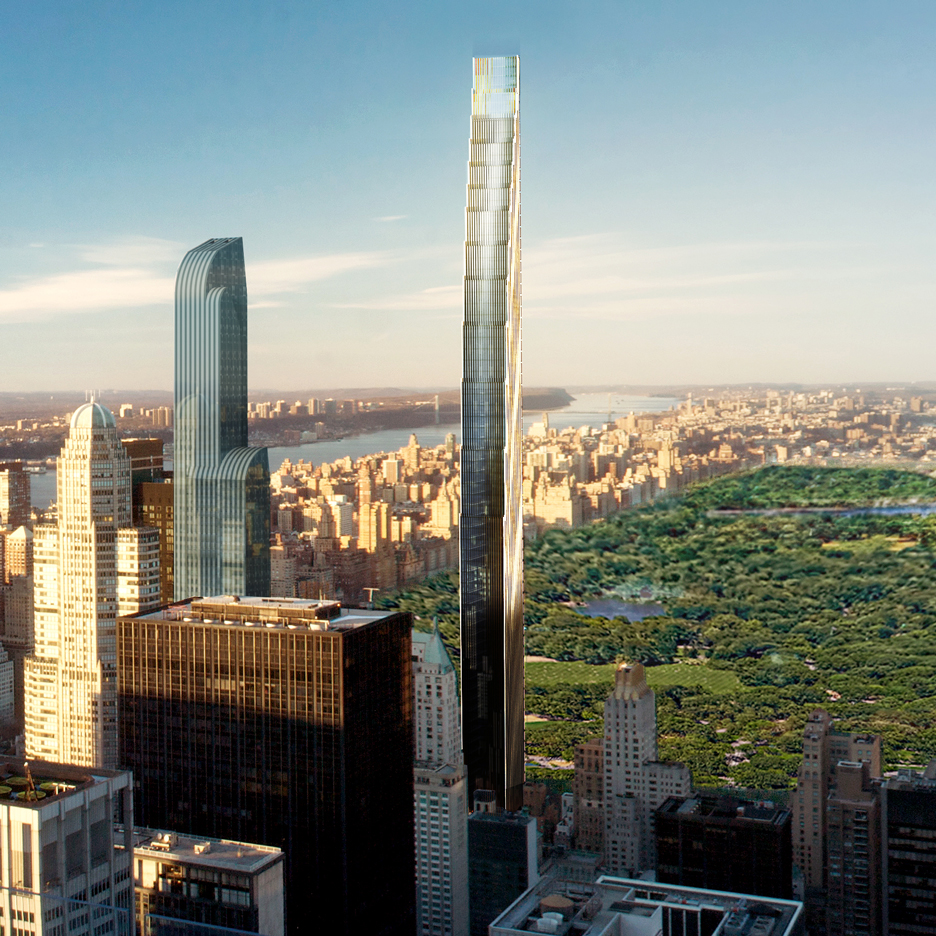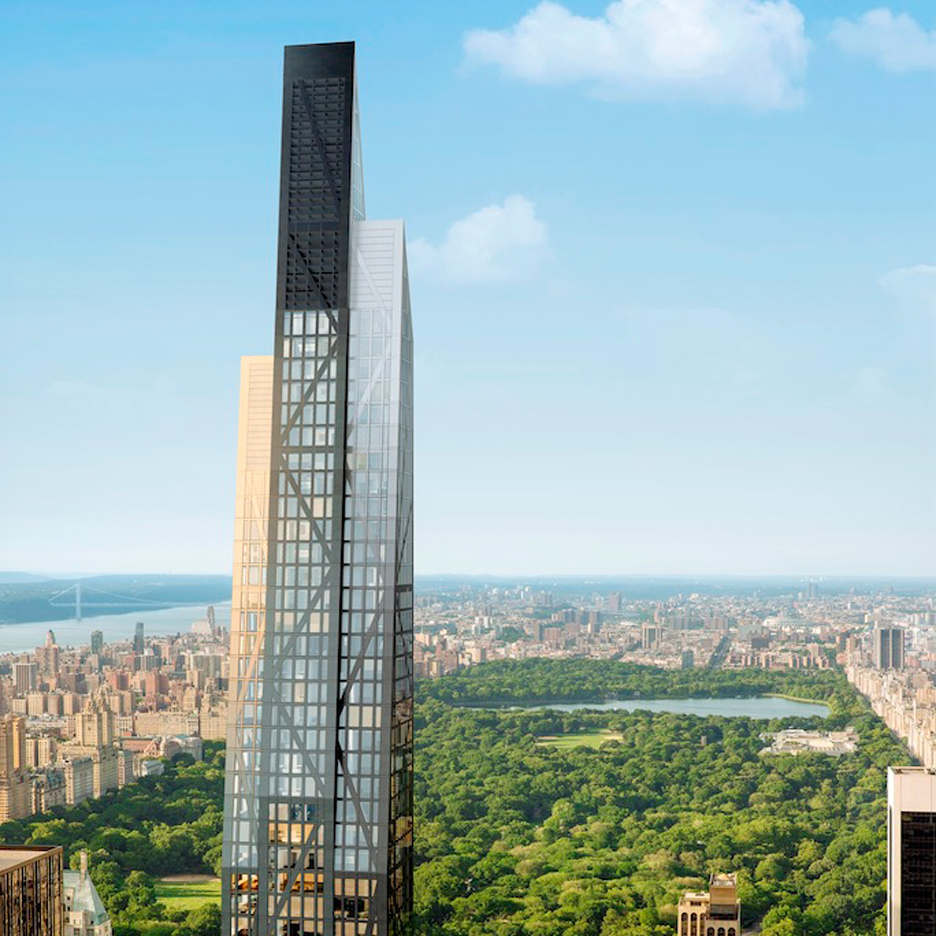Skyscraper Museum chronicles explosion of "super-slender" towers in New York
New York's Skyscraper Museum has released an online tool that tracks the growing number of skinny skscrapers in the city.
The interactive chart compares the heights and silhouettes of 18 so-called "super-slenders" now complete or under construction in New York.
Many of these measure well over 1,000 feet (305 metres), and some have ratios of base-width to height as extreme as 1:23.
"The new towers, our chart and images show, are taller and skinnier than their precedents," Skyscraper Museum founder and director Carol Willis told Dezeen.
"The benefit is a whole new fascinating crop of individualistic towers on New York's evolving skyline."

Her team's web project expands a list of these luxury residential towers first compiled for a 2013 exhibition titled Sky High and the Logic of Luxury, at the museum in New York's Battery Park. Willis coined the term super-slenders for the show.
The updated material provides details about the typology, and includes a chart that places the structures against the world's tallest buildings.
Willis said that the rise of the skinny skyscraper in New York is largely due to developers' pursuit of hefty profits.
"It's economics, even more than engineering, that has produced this new form of residential skyscraper," said Willis, who is also a professor of architecture at Columbia University.
"The unprecedented per-square-foot sales price – from $4,000 to as much as $11,000 for these exclusive condos with their trophy views – makes them very profitable for developers, even though they are also enormously expensive to build."

The buildings – all over 50 storeys – include Rafael Viñoly's 432 Park Avenue, SHoP Architects' 111 West 57th Street and Christian de Portzamparc's One57.
Apartments in these buildings can fetch up to $11,000 per square foot, and some of their penthouses are in contract for between $47 million to $95 million.
"They began to be designed in the days of the luxury housing boom just before the recession that began with the banking crisis of 2008," said Willis.
Now the economy has recovered, developers are being even more ambitious, and building ever taller and skinnier.

Some of the most recent proposals for Manhattan include towers by Foster + Partners and Jean Nouvel.
Many of the skyscrapers are clustered around Central Park and particularly 57th Street – now known as Billionaire's Row – but Herzog & de Meuron's 56 Leonard in Tribeca and Rafael Viñoly's 125 Greenwich Street for the Financial District are among examples in other neighbourhoods.
Slender towers can be found worldwide, particularly in cities like Hong Kong where land available for building is scarce.
What is unique to New York, said Willis, is their designation for the ultra-wealthy. However, she suggested that the trend could already be spreading to cities like Dubai, Singapore and Mumbai.

Last year, New Yorkers spoke out against the rash of super-tall skyscrapers in their city, which they say will overshadow Central Park.
Steven Holl also added his voice in an Opinion piece for Dezeen. The US architect said that Manhattan's super-thin residential towers for the super-rich represent inequality in architectural form.
However, Willis believes that skinny skyscrapers are a welcome addition to the New York skyline.
"I don't think there is a downside, so long as we tax luxury condos fairly, which is a policy that would apply across that market, no matter what the height," she said.